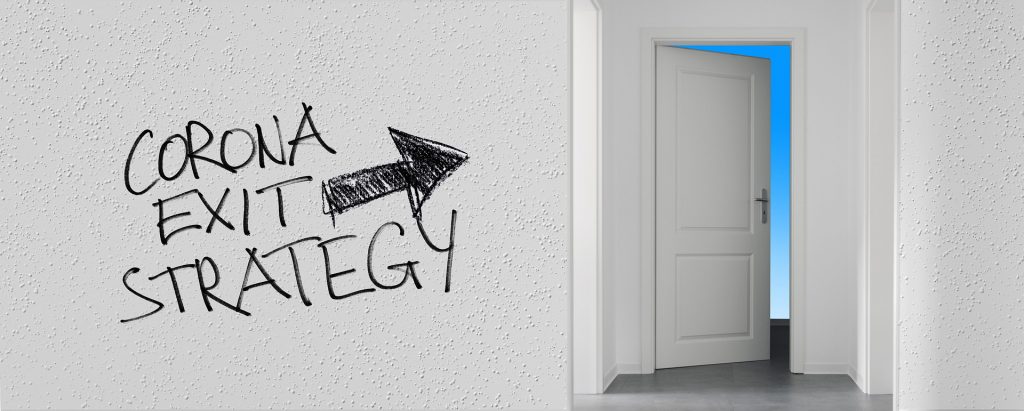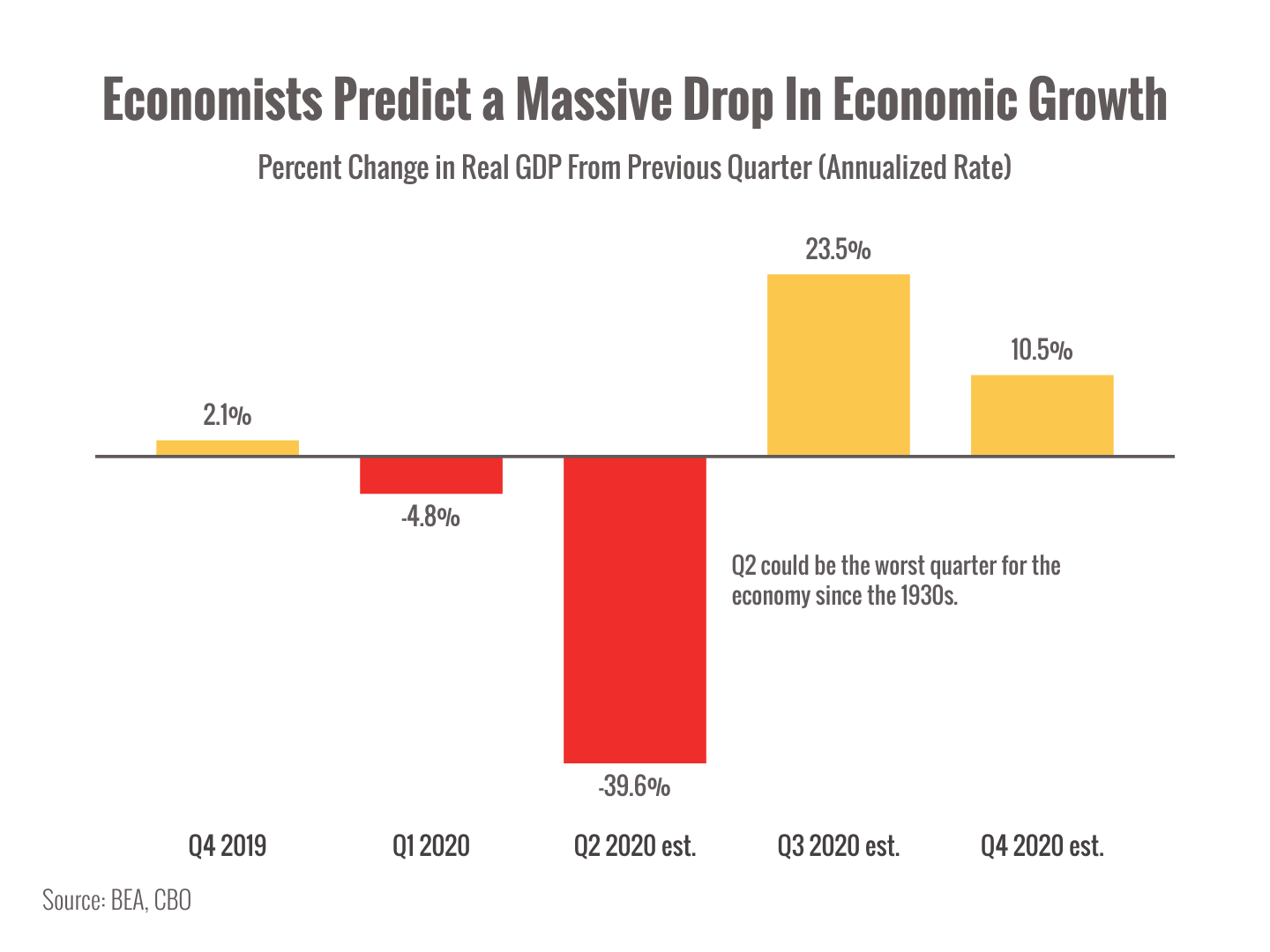
I hope you’re safe and well.
It’s been weeks since we shuttered the office and started working from home and, like many, I’m feeling the strain of upended life.
How about you? Are you ready to venture out again?
In this post I thought I’d give you a rundown of some of the latest economic projections as well as a sneak peek of what post-lockdown life could look like for us soon.
(Ready for a break from COVID-19? No worries. Scroll down to the P.S. for some wonderful distractions.)
On to the economy.
You may have seen a headline showing that U.S. economic growth dropped -4.8% in the first quarter after posting 2.1% growth in Q4 2019. That’s not a surprise.1
Unfortunately, worse news is ahead since widespread layoffs and shutdowns didn’t hit until late March. Here’s a projection of what the next few quarters could look like for the economy.2

You can see in this chart that the coronavirus hit the economy like a tsunami. Q2 could be the worst quarter since the Great Depression.3
The arithmetic of recovering from a 30%+ drop in economic growth means that it could take many months (maybe even years) to return to pre-pandemic GDP levels, especially if we face multiple waves of infection.
Let’s mentally prepare for that.
April 2020 is likely to be one of the worst months for the economy in history; contradictorily, it was also a blockbuster month for stocks.4
Why are stocks so disconnected from the economic data?
Fundamentally, a stock’s price is an attempt to put a value on the underlying company’s earnings now and in the future. Complicating the calculation are factors like fear, greed, uncertainty, and movements in the overall market.
While economic data looks back at what has already happened (or is happening now), the stock market looks forward at the trajectory of the business environment. Framed that way, the rally isn’t so unusual since investors are expecting things to get better, not worse.
Will the rally continue? Hard to say. Volatility is very likely to be the name of the game for months.
Economists are predicting a rebound in Q3 2020. Are they right?
You know by now that we can’t perfectly predict what the recovery will look like; all economic estimates are based on educated guesses about spending, business investment, trade, and other factors. The biggest unknown is “personal consumption” by folks like you and me. Our spending drives 70% of economic growth.
The pace of the recovery depends on how quickly businesses reopen and consumers go out to shop, eat, travel, and spend money. If people don’t feel safe going out or don’t feel confident enough to open their wallets, growth could take longer to come back.
What do you think? Will you go back to your pre-coronavirus routine?
What could life look like as NJ reopens? While America is just now taking the first tentative steps toward reopening, many countries around the world are farther along, offering us a glimpse of what daily life might look like in a world where the coronavirus still remains a threat.5
Hong Kong: Restaurants are open but tables must be spaced farther apart.
South Korea: Pro sports are back but athletes play to empty stadiums. Temperature screening is in place in many buildings.
Taiwan: Schools are in session but assemblies are canceled and students wear face masks in class.
Australia: Beaches are open but sunbathing, picnicking, and large gatherings are verboten.
How long will coronavirus precautions overshadow our daily life? Realistically, some restrictions are likely to drag on until a vaccine or breakthrough treatment becomes widely available.
What do you think? What will our “new normal” look like?


